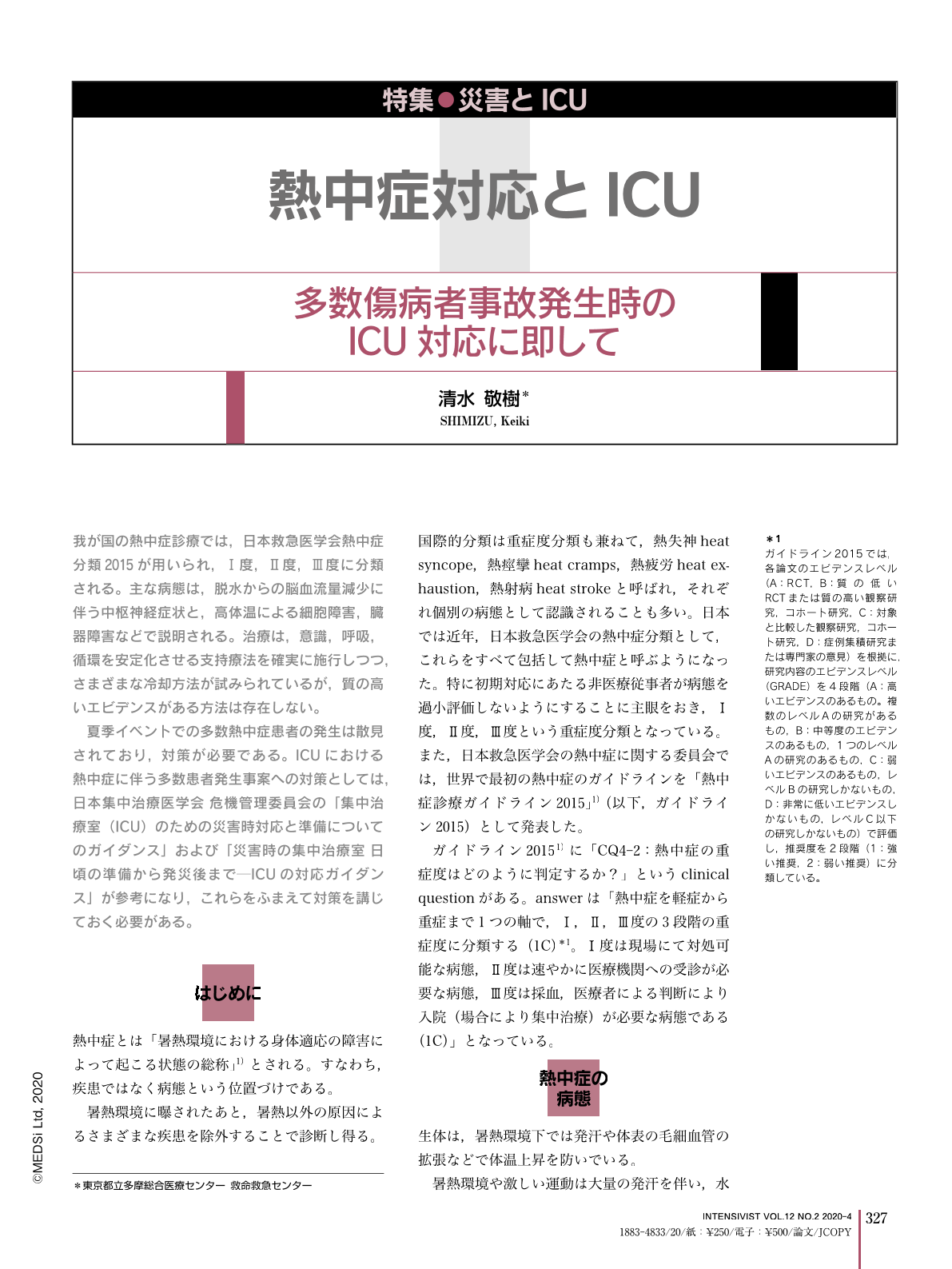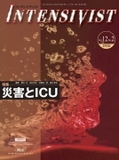Japanese
English
- 有料閲覧
- Abstract 文献概要
- 1ページ目 Look Inside
- 参考文献 Reference
我が国の熱中症診療では,日本救急医学会熱中症分類2015が用いられ,Ⅰ度,Ⅱ度,Ⅲ度に分類される。主な病態は,脱水からの脳血流量減少に伴う中枢神経症状と,高体温による細胞障害,臓器障害などで説明される。治療は,意識,呼吸,循環を安定化させる支持療法を確実に施行しつつ,さまざまな冷却方法が試みられているが,質の高いエビデンスがある方法は存在しない。
夏季イベントでの多数熱中症患者の発生は散見されており,対策が必要である。ICUにおける熱中症に伴う多数患者発生事案への対策としては,日本集中治療医学会 危機管理委員会の「集中治療室(ICU)のための災害時対応と準備についてのガイダンス」および「災害時の集中治療室 日頃の準備から発災後まで—ICUの対応ガイダンス」が参考になり,これらをふまえて対策を講じておく必要がある。
The heat stroke guidelines 2015 classification is used in Japan for the management of patients with heat stroke. Patients are classified as grade I, grade II, or grade III. The pathophysiology is based on a cellular disorder in the central nervous system. Hyperthermia is accompanied by a decrease in cerebral blood flow from dehydration, an organ disorder. Treatment is based on supportive therapy to stabilize consciousness, breathing, and circulation. Various cooling methods have been used but there is no single best method. The majority of these patients present during large events in the summer and priority measures are needed. We suggest referring to the guidelines for the majority of patients associated with heat stroke in the ICU. Guidance regarding disaster correspondence and preparations for intensive care units (ICU) is published by the Crisis Control Measures Committee of the Japanese Intensive Care Medical Society. Appropriate measures must be taken with consideration of this guidance.

Copyright © 2020, MEDICAL SCIENCES INTERNATIONAL, LTD. All rights reserved.


